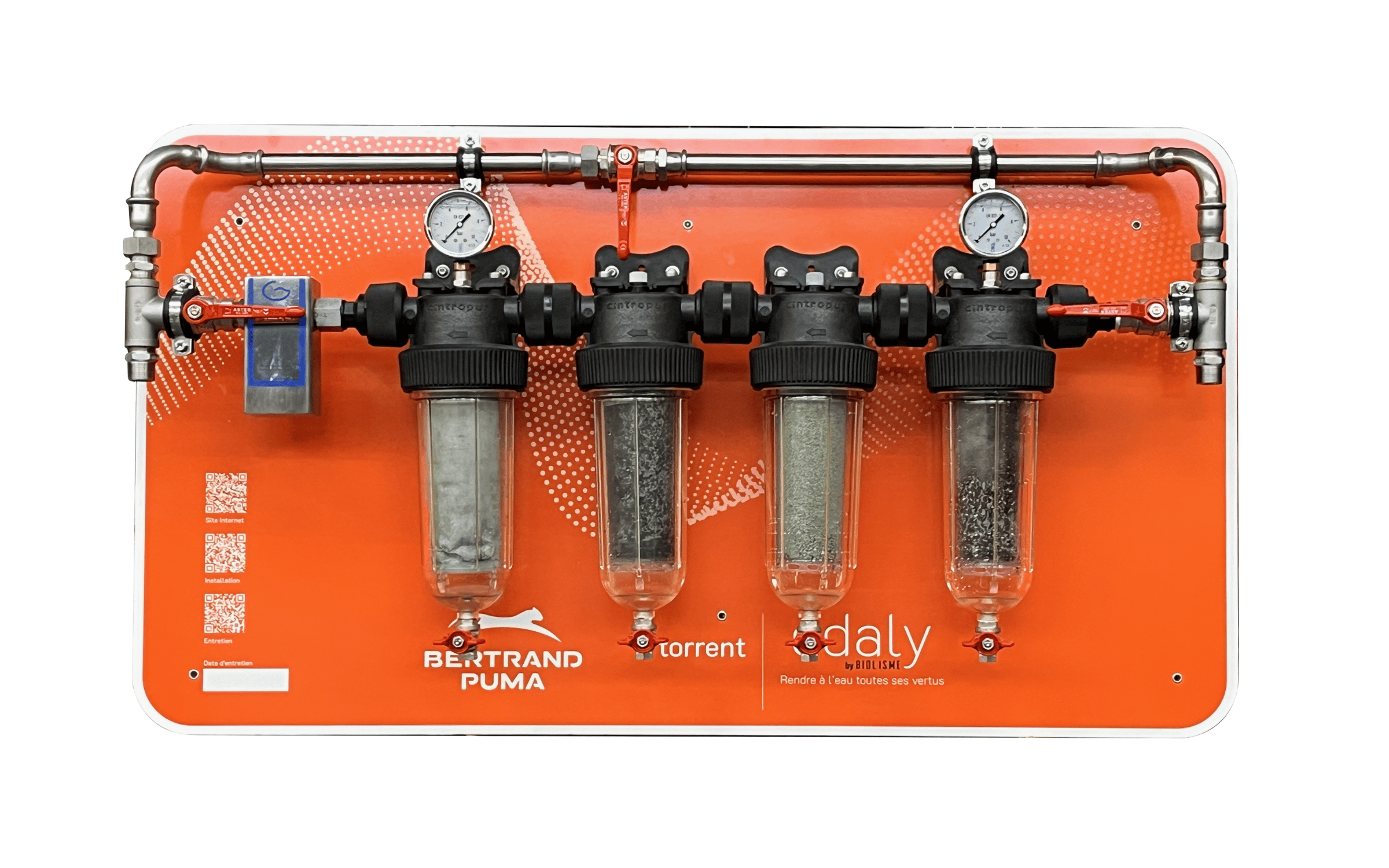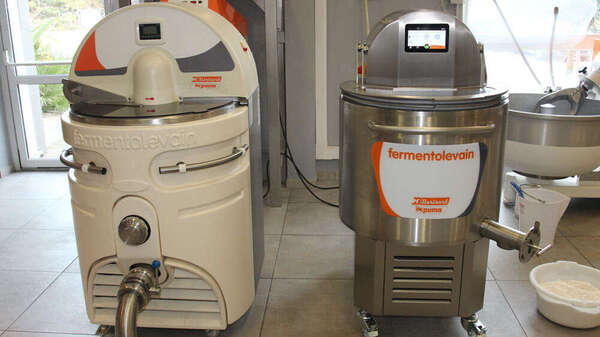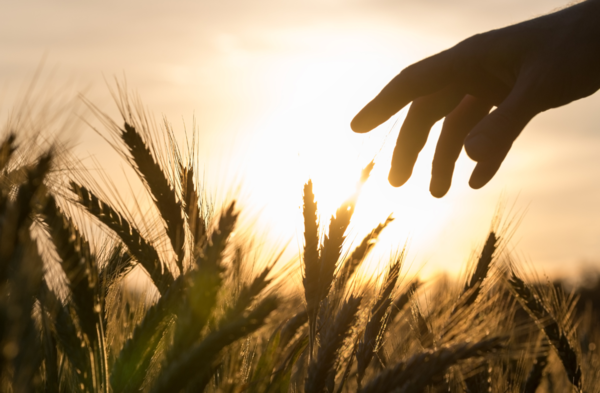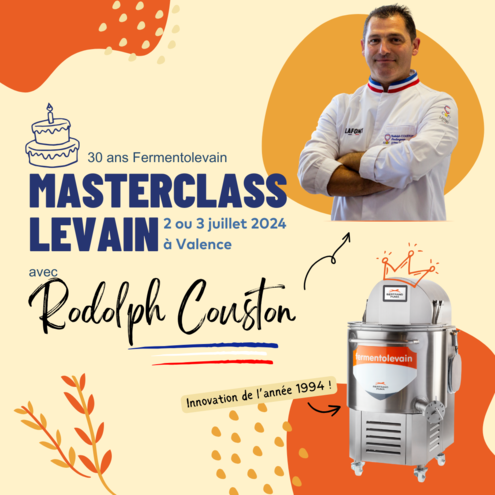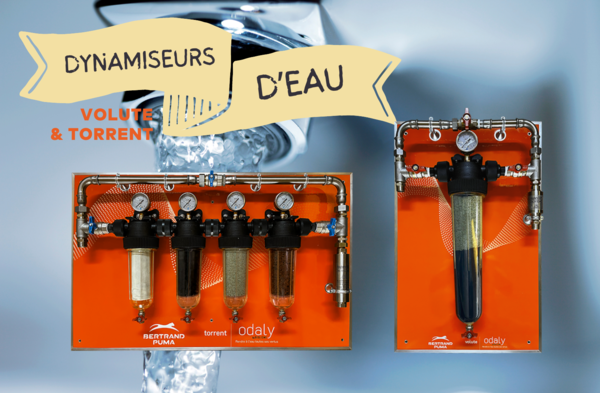Water is essential to life in general and to the baker's in particular.
ITS ROLE: the link between the ingredients of bread
After flour, water is the baker's second most important raw material. Without it, the starch grains would not swell and no gluten network would form. The dough would not be able to retain carbon dioxide during fermentation.
It therefore plays a major role in the plasticity of the dough. In addition, water helps dissolve the salt and other compounds. It provides the moisture essential for fermentation to take place.
A FEW FIGURES ABOUT WATER
🧍♂️ The human body is 70% water, as is fresh yeast, and even more surprisingly, jellyfish are 98% water.
🌎 Three quarters of the earth is covered by ocean water.
🌾 One hectare of wheat requires an average of 4000 m3 of water per year and produces an average of 80 quintals of wheat (8 tons), or 6 tons of flour.

💧 DRINKING OR FILTERED WATER: THE RIGHT WATER
Today, water is no longer a scarce commodity. Nevertheless, the baker cannot afford to use just any water. The water that flows from the tap is called drinking water. It is colorless, tasteless, odorless and fresh.
It must meet numerous conditions in terms of microbiology and the presence of contaminants. For example, it must not contain more than 50 mg/liter of nitrates. Most of these nitrates come from nitrogen fertilizers used to fertilize crops. That is why it is important to measure the intake as accurately as possible, because nitrates are transformed into carcinogenic substances in the human body.
In the water treatment plants that supply the cities, the impurities are eliminated by filtration. This first stage is often followed by sterilization with chlorine or ozone, in order to eliminate microbes and viruses. However, this drinking water is not always usable in bakeries. The reason?
The significant presence of limestone. This is what causes the build-up of limescale in pipes, tap filters and steam devices in ovens. Very hard water is known as hard water. It does not foam when soap is added. The baker must therefore treat it before it enters the steam devices in his oven.
The most common method is to pass the water through resins. These will retain the limescale particles. This is the case with the 2 main solutions on the market, the water softener and the osmosis system. In both cases, the water passes through the membrane, which allows the water molecules to pass through and retains the limescale molecules, which are much larger. In both cases, the membranes then have to be cleaned using two different processes, which have in common that they use a lot of rinse water: 130 to 200 liters of water are used for every 100 liters of filtered water!
However, there is another way to purify water. This is the method inspired by the natural filtration of rainwater, which becomes the water in our groundwater and springs. The raindrops pass through the sedimentary and rocky layers of the soil, first on the surface and then at depth, where the rocks and minerals act like the membranes described above. However, since nature does things so well, this water passes through so many layers that the impurities collected from polluted soil are then cleaned and stripped of pollutants throughout its journey, while receiving minerals and energy from its runoff.
Rainwater is therefore naturally filtered and then energized in the underground layers. The spring water can now flow and provide all its benefits. Some solutions reproduce this natural filtration using rocks with well-identified properties, which are then energized through dynamic systems that restore the water's natural benefits. These are water filtration-energization systems.
Improved Dough Quality
One of the main reasons why filtered and revitalized water is beneficial in baking is its impact on dough quality. Pure water allows for better hydration of the ingredients, which leads to a more homogeneous and elastic dough. The impurities present in tap water can interfere with the development of gluten, which is essential for the structure of bread. By using purified water, bakers can obtain a more consistent dough that is easier to work with.
In addition, revitalized water improves the activity of yeast and lactic acid bacteria, which are essential for fermentation. Revitalized water promotes more efficient fermentation, resulting in lighter and more airy bread. The molecular structure of revitalized water also allows for better absorption of nutrients by microorganisms, thus improving the flavor and aroma of the final product.
Health benefits
The use of quality water in baking also has health benefits for consumers. Pure water is free of potentially harmful contaminants such as heavy metals, nitrates and pesticides. In addition, dynamized water is often enriched with beneficial minerals such as magnesium and calcium, which are essential for good health.
By consuming bakery products prepared with this special water, customers can benefit from better hydration and a supply of essential minerals. This can contribute to better digestion and increased general well-being, while extending the shelf life of the products. This reduces food waste. Bakeries can therefore adopt more sustainable practices, while offering high-quality products to their customers.
Improved Taste and Texture
Taste and texture are key elements in customer satisfaction. Purified and revitalized water significantly improves these aspects. By eliminating unwanted minerals and impurities, pure water allows the natural flavors of ingredients to fully develop. The flavors are more pronounced and the textures more pleasant.
Thanks to its optimized molecular structure, revitalized water promotes better interaction between ingredients. This results in a softer texture and a more tender crumb. The products are more pleasant on the palate, which can make all the difference for demanding customers.
Better Product Preservation
Shelf life is a crucial factor in baking. Products must remain fresh and tasty for as long as possible. Quality water helps to prolong the freshness of breads and pastries. By eliminating contaminants and improving the structure of the water, the risk of mold and bacteria developing is reduced. In addition, better hydration of the ingredients helps to maintain the moisture of the product, thus preventing it from becoming dry too quickly.
In short, purified and dynamized water offers many benefits in baking. It improves the quality of the dough, extends the shelf life of products, enriches the taste and texture, and has health benefits for consumers. In addition, it contributes to more sustainable and environmentally friendly practices. For bakers concerned with quality and customer satisfaction, adopting this special water can make a real difference. By integrating purified and energized water into their production processes, bakeries can not only improve their products, but also stand out in an increasingly competitive market.
